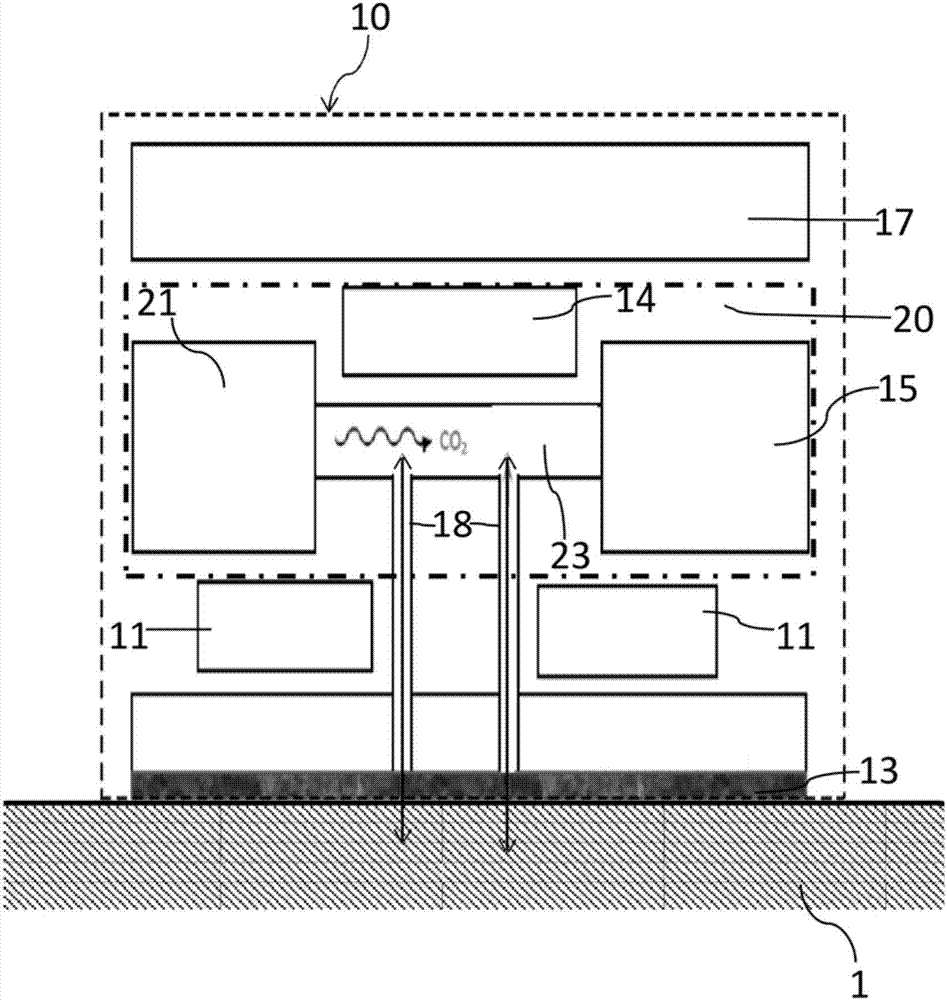Noninvasive optical determination of partial pressure of carbon dioxide
A invasive, photoelectric detector technology, used in medical science, diagnostic recording/measurement, diagnosis, etc., can solve problems such as laser drift, changing light wavelength, etc., to achieve improved efficiency, short response time, and reliable use.
- Summary
- Abstract
- Description
- Claims
- Application Information
AI Technical Summary
Problems solved by technology
Method used
Image
Examples
Embodiment
[0073] refer to figure 1 with figure 2 The sensor (10) will be placed on the patient's skin (1) for measuring the partial pressure of blood gas in the skin. The membrane (13) is permeable to this gas, but prevents moisture, dust, etc. from entering the sensor core. Blood gas travels through two vent tubes (18) into the measurement chamber (23). The measurement chamber (23), the vent tube (18) and the skin define a closed system. Therefore, the amount of blood gas molecules in the measurement chamber (23) will timely reflect the partial pressure of blood gas in the patient's skin tissue. At one end of the measurement chamber (23), a light source (21) is provided so as to emit light into the measurement chamber (23). In the measurement chamber (23), the light at 4.26 μm is measured by the CO in the chamber (23) 2 The molecules absorb, resulting in attenuation of the light intensity at this wavelength, while the light at 3.9 μm is not absorbed and thus passes through the m...
PUM
 Login to View More
Login to View More Abstract
Description
Claims
Application Information
 Login to View More
Login to View More - R&D Engineer
- R&D Manager
- IP Professional
- Industry Leading Data Capabilities
- Powerful AI technology
- Patent DNA Extraction
Browse by: Latest US Patents, China's latest patents, Technical Efficacy Thesaurus, Application Domain, Technology Topic, Popular Technical Reports.
© 2024 PatSnap. All rights reserved.Legal|Privacy policy|Modern Slavery Act Transparency Statement|Sitemap|About US| Contact US: help@patsnap.com










